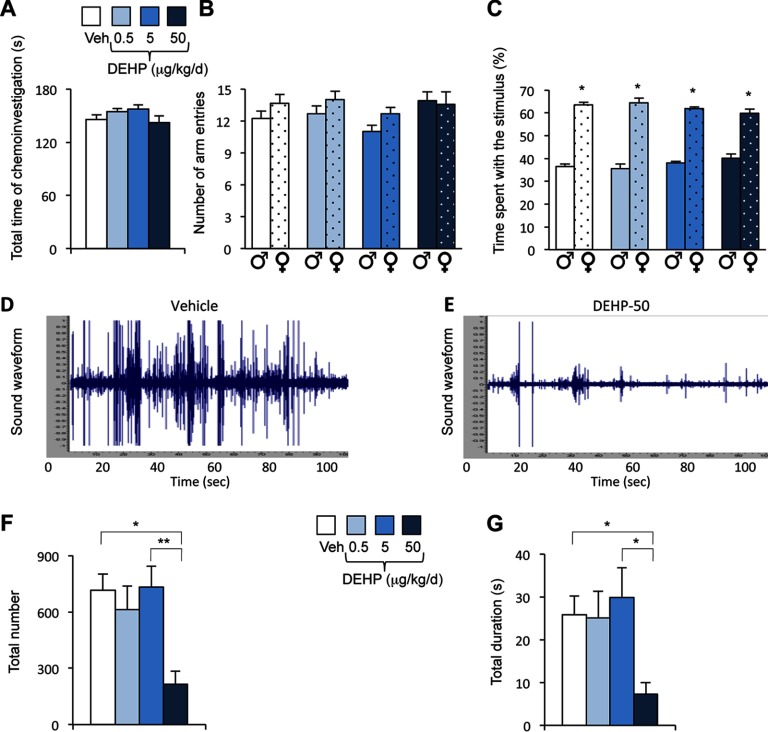Figure 1.
Effects of phthalate di(2-ethylhexyl) phthalate (DEHP) on olfactory preference and courtship vocalizations in male mice. (A) Total time spent in the chemoinvestigation of male (♂) and sexually receptive female (♀) stimuli by males exposed to the vehicle (Veh) or DEHP (0.5, 5, or ). (B) Number of entries into the male or female arm of the Y-maze. (C) Percentage of time spent in investigating males (♂) vs. sexually receptive females (♀). Data are expressed as the means of 11–12 males per treatment group, * vs. the male arm. (D–E) Representative sound waveform for males exposed to vehicle (D) or DEHP at (E) in the presence of a sexually receptive female. (F–G) Total number (F) and duration (G) of ultrasonic vocalizations (USVs) produced during the 4-min test by males exposed to the vehicle or DEHP at 0.5, 5, or . Data are expressed as the means of 11–12 males per treatment group; *, **.

